The Largest Minority Group in the U.S: Americans with Disabilities
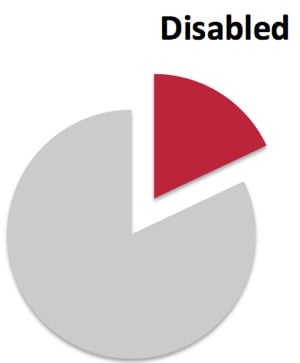 More than 50 million Americans – 18% of the population – have disabilities, making them the largest minority group in the country. In addition, approximately 71.5 million baby boomers will be over the age of 65 by the year 2030; many will require special provisions to meet their age-specific physical needs.
More than 50 million Americans – 18% of the population – have disabilities, making them the largest minority group in the country. In addition, approximately 71.5 million baby boomers will be over the age of 65 by the year 2030; many will require special provisions to meet their age-specific physical needs.
There are many reasons for your business to provide accessibility to disabled individuals. First, it’s the right thing to do. Second, each of these individuals is a potential customer and studies have shown that once people with disabilities find a business where they can comfortably and easily shop or get services in, they become repeat customers. And finally, the Americans with Disabilities Act allows individuals and disability rights organizations to bring lawsuits against businesses that do not comply with the Act, knowingly or unknowingly. In such cases having the right commercial insurance can be critical to your financial protection.
What is ADA?
The ADA, signed into law in 1990, is a federal civil rights law that prohibits the exclusion of people with disabilities from everyday activities such as shopping, eating in a restaurant, or seeing a movie. Thanks - in great part - to the ADA, people with disabilities are living more independent lives and participating in more activities within their communities.
The ADA is Confusing, But Your Business Can be Held Liable Regardless of Your Intent
Unfortunately, the ADA laws can be very confusing and often frustrating to small business owners, and although there are some exceptions given to smaller businesses regarding the ADA rules against disability discrimination in employment and the requirement that employers provide reasonable accommodations to disabled employees, the adoption of Title III of the ADA in 2010 applies to every business that serves the public - regardless of the size of the business or the age of the building. How confident are you that your business is in full compliance? Do you have the proper commercial liability insurance protection to help shield you from unknown risks?
Title III applies to businesses that provide goods or services to the public (known as “public accommodations”). There are 12 categories of public accommodations, including stores, restaurants, bars, services establishments, theaters, hotels, recreational facilities, private museums and schools, doctors’ offices, shopping malls, and other businesses. Essentially, any business that regularly serves the public (with the exception of private clubs and religious organizations) is considered a public accommodation.
Know the Most Common ADA Violations and Prepare Accordingly
These businesses must take steps to ensure that their facilities are accessible to individuals with disabilities. Here are seven of the most common areas of violations:
- Parking lots
- Exterior ramps
- Paths of travel
- Signage
- Restrooms
- Lobbies and reception areas
- Accessibility to goods and services
How Can I Protect My Business from ADA Title III Lawsuits?
If your business isn’t compliant, you can lose potential customers and open yourself up to lawsuits, heavy fines, and legal fees. Although it is impossible for businesses that serve the public to completely avoid the risk of ADA lawsuits, there are a number of steps you can take to minimize your risk:
- Have your property inspected by an ADA compliance expert.
- Read through the 2010 ADA Standards for Accessible Design.
- Read through the ADA Small Business Primer.
- Take the online course, “At Your Service: Welcoming Customers with Disabilities.”
- Know the difference between ADA requirements and state and local building codes. “Grandfather” provisions that are often found in local building codes do not exempt businesses from ADA Title III compliance.
- Don’t ignore letters from plaintiff’s attorneys threatening ADA lawsuits. Sometimes claims can be resolved with little cost if addressed prior to extensive litigation.
- Provide training to your employees and staff on how to address questions or concerns about disability access from customers.
- Discuss your liability insurance with your insurance agent
Knowledge is Key to the Right Business Insurance Protection
For more information about commercial liability insurance, contact American Insuring Group at (800)947-1270 or (610)775-3848. We'll help you get the right business insurance protection at the right price using our pool of competing insurance providers. Contact us today.


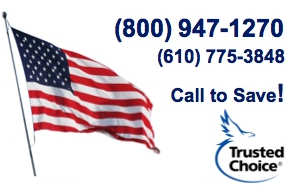
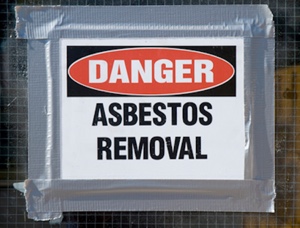 You say you have good
You say you have good  The inability to get the right care, from the right provider, at the right time is one of the leading causes of increasing medical costs.
The inability to get the right care, from the right provider, at the right time is one of the leading causes of increasing medical costs.  Contact Us for Workers Compensation Insurance Assistance
Contact Us for Workers Compensation Insurance Assistance Did you recently get married? Have you started thinking about having children? Are you already pregnant? Congratulations! This is a very exciting time in your life!
Did you recently get married? Have you started thinking about having children? Are you already pregnant? Congratulations! This is a very exciting time in your life! 
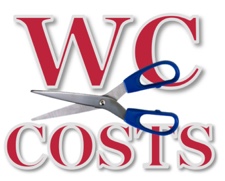 Fraud, waste, and abuse continue to drive up the cost of administering workers’ compensation programs. Workers’ compensation fraud, which accounts for approximately one-quarter of all insurance fraud, comes in all forms: injury while off work, multiple claims, injury concurrent with termination, and many more.
Fraud, waste, and abuse continue to drive up the cost of administering workers’ compensation programs. Workers’ compensation fraud, which accounts for approximately one-quarter of all insurance fraud, comes in all forms: injury while off work, multiple claims, injury concurrent with termination, and many more. 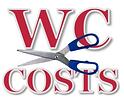 For additional methods to reduce the cost of workers’ compensation, including getting the best rate on quality workers comp insurance,
For additional methods to reduce the cost of workers’ compensation, including getting the best rate on quality workers comp insurance,  If you own a fleet of vehicles that are used exclusively for your business or you own a freight truck or delivery truck, you probably understand that you need commercial vehicle insurance on those vehicles. But what if you have one vehicle that you use to deliver pizzas? What if you use your personal vehicle to drive to job sites or to meetings?
If you own a fleet of vehicles that are used exclusively for your business or you own a freight truck or delivery truck, you probably understand that you need commercial vehicle insurance on those vehicles. But what if you have one vehicle that you use to deliver pizzas? What if you use your personal vehicle to drive to job sites or to meetings?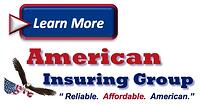
 Smart business owners know that insurance is important to protect their business and assets. But, knowing which ones are right for your business can be a challenge. No one wants to be caught without the right
Smart business owners know that insurance is important to protect their business and assets. But, knowing which ones are right for your business can be a challenge. No one wants to be caught without the right  These five business insurance questions are a great starting point for any business owner, but you don’t need to go it alone. The advice of a trusted and experienced independent insurance agent from American Insuring Group can help ensure that you obtain the right insurance at the right price for your business.
These five business insurance questions are a great starting point for any business owner, but you don’t need to go it alone. The advice of a trusted and experienced independent insurance agent from American Insuring Group can help ensure that you obtain the right insurance at the right price for your business.  Whether you’re a subcontractor or a general contractor – whether you build small backyard sheds or giant commercial buildings – whether you’re a one-man remodeling business or a multi-million dollar construction company, there are three types of insurance you need to consider. In other words, the size of your business and the size of the project make little difference. If you want to protect your investment, your employees, and even your business, there are three types of
Whether you’re a subcontractor or a general contractor – whether you build small backyard sheds or giant commercial buildings – whether you’re a one-man remodeling business or a multi-million dollar construction company, there are three types of insurance you need to consider. In other words, the size of your business and the size of the project make little difference. If you want to protect your investment, your employees, and even your business, there are three types of 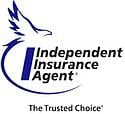 For more customized information about your construction insurance or
For more customized information about your construction insurance or  s there a non-profit organization near and dear to your heart that you would like to assist financially? Maybe it’s a religious organization, a pet shelter, or a children’s home. You aren’t alone. It turns out that we are a very charitable people with more than 95% of American households giving an average of just under $3,000 a year to charity. But, do you ever wish that you could do more? There is a way to give more financial support to your favorite charity.
s there a non-profit organization near and dear to your heart that you would like to assist financially? Maybe it’s a religious organization, a pet shelter, or a children’s home. You aren’t alone. It turns out that we are a very charitable people with more than 95% of American households giving an average of just under $3,000 a year to charity. But, do you ever wish that you could do more? There is a way to give more financial support to your favorite charity. To find out more about giving the gift of a life insurance policy to your favorite charity,
To find out more about giving the gift of a life insurance policy to your favorite charity,  Every employer is responsible for insuring a safe working environment for his or her employees. If you’re in construction, workplace safety should move to the top of your priorities because more than 20% of the work-related fatalities in 2013 occurred in the construction industry.
Every employer is responsible for insuring a safe working environment for his or her employees. If you’re in construction, workplace safety should move to the top of your priorities because more than 20% of the work-related fatalities in 2013 occurred in the construction industry. 




